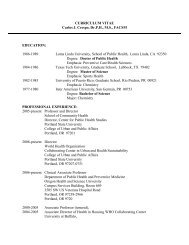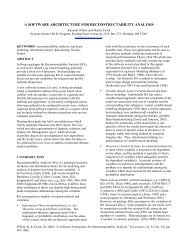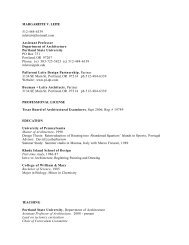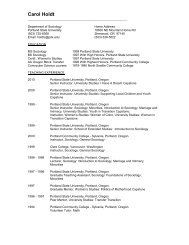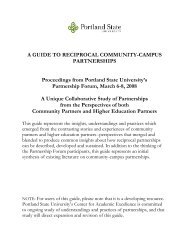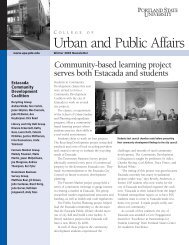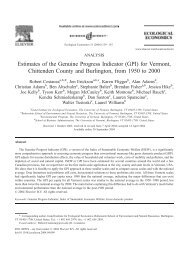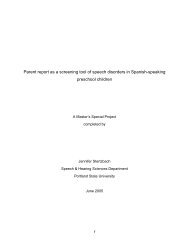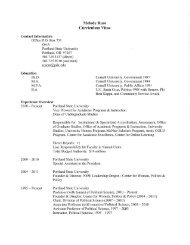Effects of integral stimulation therapy on speech - Portland State ...
Effects of integral stimulation therapy on speech - Portland State ...
Effects of integral stimulation therapy on speech - Portland State ...
You also want an ePaper? Increase the reach of your titles
YUMPU automatically turns print PDFs into web optimized ePapers that Google loves.
CP’s target sounds were made known to CP and specific informati<strong>on</strong> <strong>on</strong> how to correct it<br />
was provided. Feedback ranged from statements such as “I heard the /s/ sound, but not<br />
the /m/ sound, I need to hear /sm/” or “Did you feel your lips come together?..... Let’s try<br />
again in the mirror and watch.” Self m<strong>on</strong>itoring skills were encouraged by asking CP to<br />
rate his <strong>on</strong>line producti<strong>on</strong>s by pointing to “thumbs up” or “thumbs down” cards, by rating<br />
others’ producti<strong>on</strong>s, and by teaching puppets correct oral placements by modeling sounds<br />
and manipulating their mouths for them. As so<strong>on</strong> as target sounds were able to be<br />
produced in isolati<strong>on</strong>, practice began at simple word levels to ensure transfer <str<strong>on</strong>g>of</str<strong>on</strong>g> the skill.<br />
Practicing target sounds in words was not <strong>on</strong>ly more motivating to CP, but more<br />
functi<strong>on</strong>al for the transfer <str<strong>on</strong>g>of</str<strong>on</strong>g> skills to words and short phrases.<br />
Sample activity using <str<strong>on</strong>g>integral</str<strong>on</strong>g> <str<strong>on</strong>g>stimulati<strong>on</strong></str<strong>on</strong>g> techniques and rati<strong>on</strong>ales for use<br />
The following is an example <str<strong>on</strong>g>of</str<strong>on</strong>g> a 25-minute activity during which 12 target words<br />
(with initial /s/ clusters) were practiced yielding 70 producti<strong>on</strong>s <str<strong>on</strong>g>of</str<strong>on</strong>g> target sounds. Each<br />
/s/ blend was attempted an average <str<strong>on</strong>g>of</str<strong>on</strong>g> 5.8 times and was interspersed with short breaks.<br />
The child was presented with a motivating game such as a marble or ball run. The<br />
clinician presented the child with a pile <str<strong>on</strong>g>of</str<strong>on</strong>g> “tickets” that were stimulus picture cards <str<strong>on</strong>g>of</str<strong>on</strong>g><br />
/s/ clusters. The clinician explained that in order to obtain a ball for the track, he must<br />
give the clinician a “ticket” and practice saying the picture <strong>on</strong> it. For many activities the<br />
clinician would discuss either before or during the activity reas<strong>on</strong>s for why we are<br />
practicing our <strong>speech</strong> sounds.<br />
The clinician began by saying “Step right up! Get your ball for the ball-run!” The<br />
child handed his ticket (stimulus card) to the clinician and attempted to say the pictured<br />
word. Depending <strong>on</strong> the level <str<strong>on</strong>g>of</str<strong>on</strong>g> support needed, the clinician may have said the word<br />
45



